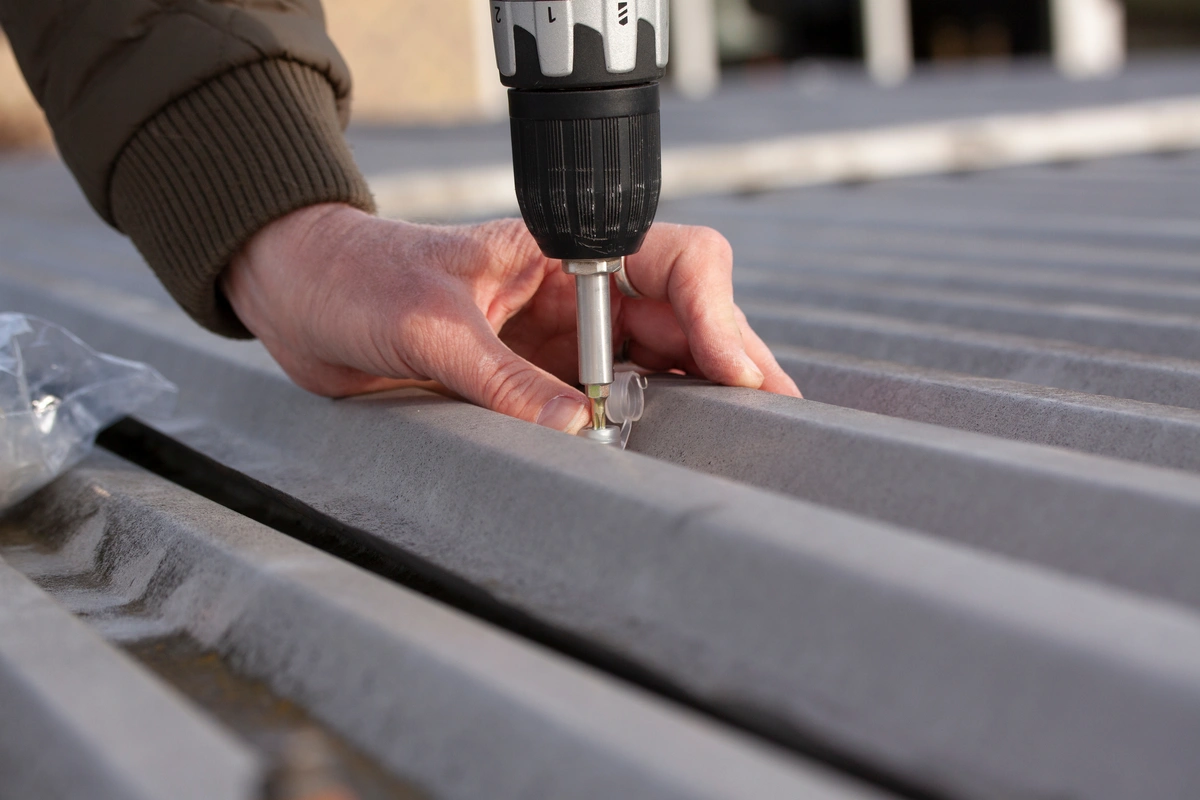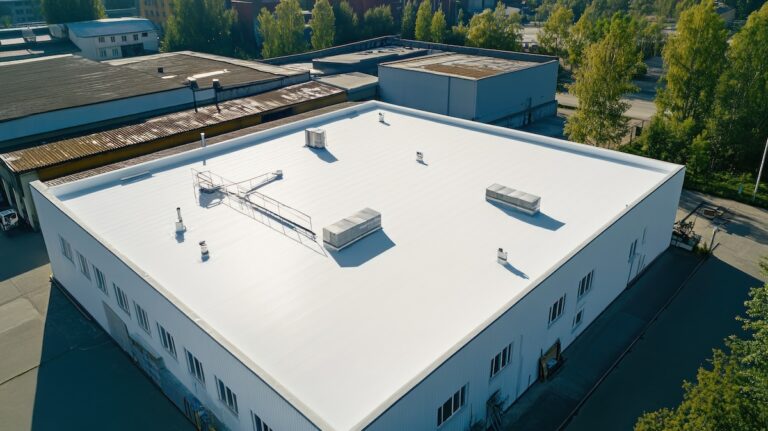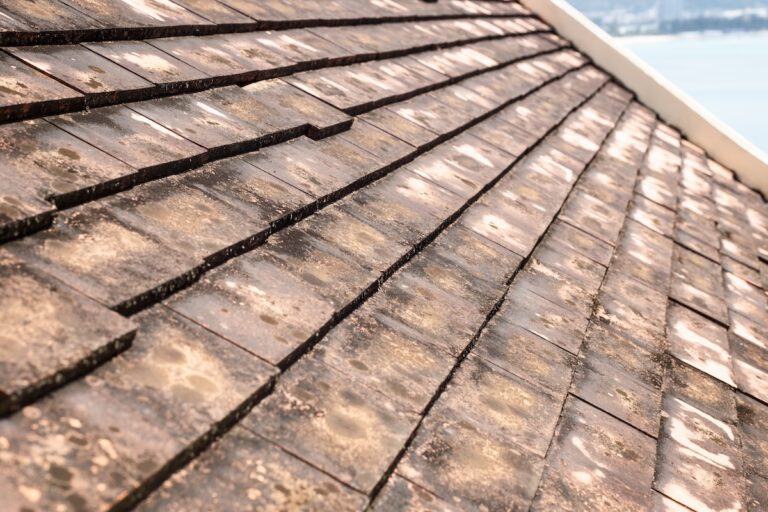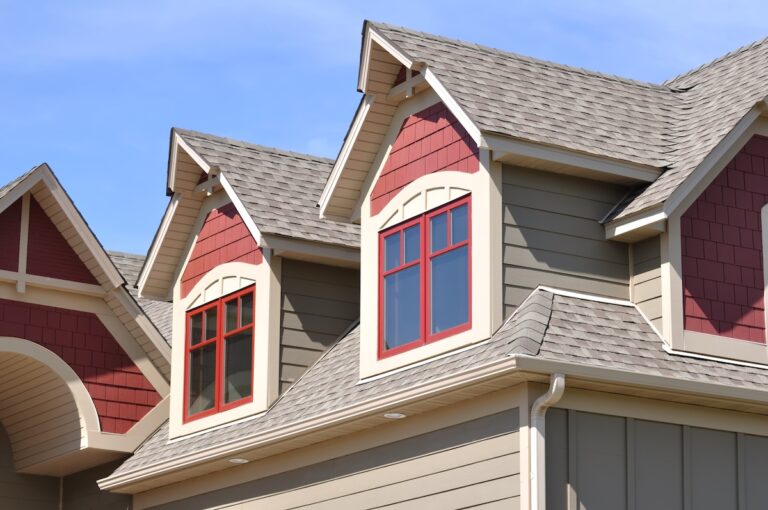Metal roofs are renowned for their durability and longevity, often outlasting traditional roofing materials like asphalt shingles. However, even the most robust metal roofs can sustain damage over time due to various factors such as weather, age, and improper installation.
When faced with issues, it’s crucial to address them promptly to prevent further deterioration and maintain the integrity of your roof. That’s why today, we’ll be diving into:
- The signs of metal roof damage
- When to repair versus replace
- DIY repair techniques
- The importance of professional assistance
- Finding qualified contractors
- Cost considerations
- Preventive measures to safeguard your investment
Keep reading to get all the details on metal roof repair!
Signs of Damage to Your Metal Roof
Before embarking on repairs, it’s essential to recognize the telltale signs of damage to your metal roof:
- Leaks: Water infiltration is a primary indicator of roof damage. Check for water stains on ceilings and walls, as well as dampness or mold growth in the attic.
- Corrosion: Metal roofs are susceptible to corrosion, especially in coastal or industrial areas with high humidity or chemical exposure. Look for rust spots or pitting on the surface.
- Loose or Missing Fasteners: Inspect the roof for loose screws, nails, or fasteners that may have become dislodged due to wind or thermal expansion.
- Dents and Dings: Impact from hail, fallen branches, or walking on the roof can cause dents and dings, compromising the structural integrity and aesthetics of the roof.
- Bent or Warped Panels: Severe weather conditions or improper installation can lead to bending or warping of metal panels, creating gaps and allowing water to seep through.
- Flashing Damage: Check the condition of flashing around chimneys, vents, and skylights. Damaged flashing can result in water penetration and subsequent leaks.
When to Repair and When to Replace
Determining whether to repair or replace a damaged metal roof depends on the extent of the damage, the roof’s age, and overall condition. Here’s a general guideline:
Minor Damage:
Small leaks, isolated dents, or localized corrosion can often be repaired without replacing the entire roof. Prompt repair can prevent further deterioration and prolong the roof’s lifespan.
Extensive Damage:
If the roof has widespread corrosion, significant structural issues, or multiple leaks, replacement may be more cost-effective and practical in the long run, especially if the roof is nearing the end of its service life.
Age of the Roof:
Consider the age of your metal roof when assessing repair versus replacement options. If the roof is relatively new and well-maintained, repairs may suffice. However, if it’s nearing or exceeding its expected lifespan, replacement might be the wiser choice to avoid recurring issues.
How to Repair a Metal Roof
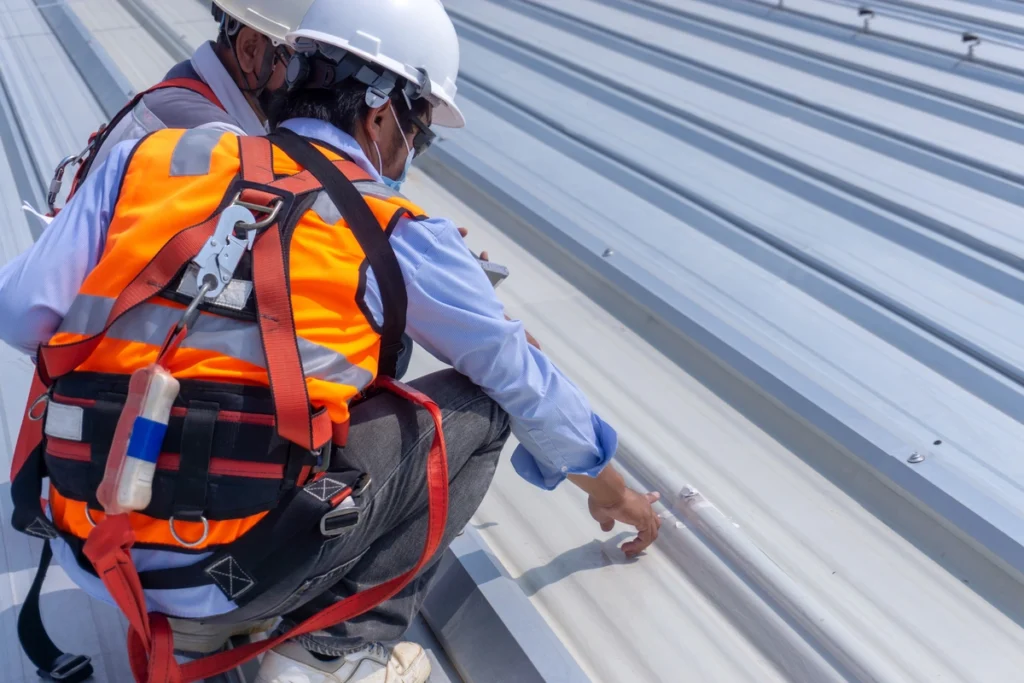
For minor repairs, homeowners with basic DIY skills can tackle certain tasks. Here’s a step-by-step guide to repairing common metal roof issues:
1) Clean the Roof:
Begin by removing debris, dirt, and rust using a stiff brush or pressure washer. Ensure the surface is clean and dry before proceeding.
2) Identify the Damage:
Thoroughly inspect the roof to pinpoint areas of concern, such as leaks, dents, or loose fasteners.
3) Patch Leaks:
Use roofing sealant or silicone caulk to seal small leaks around seams, flashing, or damaged areas. Apply the sealant generously and spread it evenly with a putty knife.
4) Straighten Dents:
For minor dents, gently tap the affected area with a rubber mallet or hammer to flatten it. Be careful not to further damage the surrounding panels.
5) Replace Fasteners:
Tighten loose screws, nails, or bolts using appropriate tools. Replace any missing or damaged fasteners with new ones to secure the metal panels in place.
6) Apply Protective Coating:
To prevent future corrosion and extend the roof’s lifespan, apply a corrosion-resistant coating or paint specifically designed for metal roofs. Follow the manufacturer’s instructions for proper application.
While DIY repairs can be cost-effective for minor issues, it’s crucial to exercise caution and avoid undertaking complex repairs beyond your skill level. Some tasks, such as replacing large sections of roofing or addressing structural issues, are best left to experienced professionals.
Why It’s Best to Leave It to the Pros
While DIY repairs may seem appealing, hiring a professional roofing contractor offers several advantages:
- Expertise and Experience: Professional roofers have the necessary skills, training, and experience to diagnose roof problems accurately and implement effective solutions.
- Safety: Roof repairs can be hazardous, especially on steep or high roofs. Professional roofers are equipped with proper safety gear and follow industry safety protocols to minimize the risk of accidents or injuries.
- Quality Workmanship: Experienced roofers use high-quality materials and techniques to ensure durable, long-lasting repairs for a sleek new metal roofing system. Their attention to detail and craftsmanship can significantly enhance the performance and appearance of your metal roof.
- Warranty Coverage: Many roofing contractors offer warranties on their workmanship and materials, providing peace of mind and protection against future issues.
How to Find a Qualified Metal Roofing Contractor
When selecting a roofing contractor for your metal roof repair or replacement, consider the following factors:
Credentials:
Verify that the contractor is licensed, bonded, and insured to perform roofing work in your area. Look for certifications from reputable industry organizations, such as the National Roofing Contractors Association (NRCA).
Experience:
Choose a contractor with extensive experience in installing and repairing metal roofs. Ask for references and examples of past projects similar to yours.
Reputation:
Research online reviews, testimonials, and ratings from previous clients to gauge the contractor’s reputation and customer satisfaction level.
Written Estimate:
Obtain detailed written estimates from multiple contractors, outlining the scope of work, materials, timeline, and cost breakdown. Compare quotes to ensure they align with your budget and expectations.
Communication:
Choose a contractor who communicates clearly and promptly, addressing any concerns or questions you may have throughout the project.
Guarantees and Warranties:
Inquire about warranties on both labor and materials, as well as any guarantees or post-installation support offered by the contractor.
Cost of Repairs
The cost of repairing a metal roof varies depending on factors such as the extent of damage, roof size, accessibility, and labor rates in your area. Minor repairs, such as patching leaks or replacing individual panels, may cost a few hundred dollars, while more extensive repairs or full roof replacements can range from several thousand to tens of thousands of dollars.
To ensure an accurate estimate, schedule a consultation with a reputable roofing contractor who can assess your roof’s condition and provide a detailed quote based on your specific needs and preferences. While cost is a significant consideration, prioritize quality workmanship and durable materials to maximize the longevity and performance of your metal roof.
How to Avoid Damaging Your Roof in the Future
Preventive maintenance is key to preserving the integrity and longevity of your metal roof. Here are some tips to avoid future damage:
Regular Inspections:
Conduct routine inspections of your roof at least twice a year, preferably in the spring and fall, to identify and address any issues promptly.
Keep Gutters Clear:
Clean debris, leaves, and other debris from gutters and downspouts to prevent water backup and potential roof damage.
Trim Trees:
Trim overhanging branches that could potentially fall onto the roof during storms or high winds, causing damage to metal panels.
Address Rust Promptly:
Treat rust spots promptly using a rust converter or primer to prevent corrosion from spreading.
Monitor Sealant and Flashing:
Inspect and replace deteriorating sealant or flashing around vents, chimneys, and skylights to maintain a watertight seal.
Schedule Professional Maintenance:
Hire a qualified roofing contractor to perform annual maintenance and inspections, ensuring any issues are addressed before they escalate.
Protect Your Metal Roof System
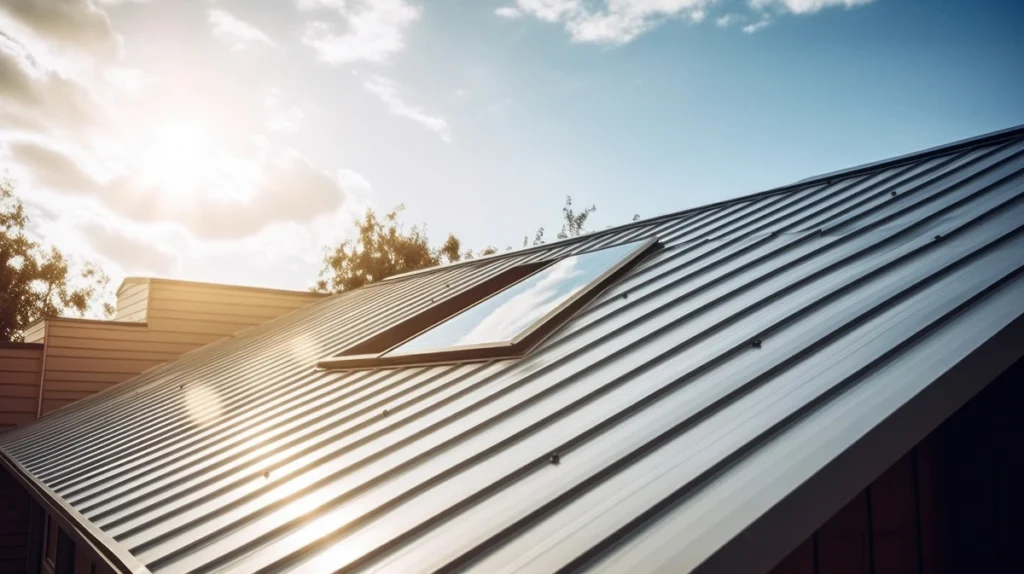
Metal roofs offer exceptional durability and longevity, but they’re not immune to damage over time. By recognizing the signs of roof damage, knowing when to repair versus replace, and taking proactive measures to maintain your roof, you can prolong its lifespan and protect your investment. Whether you opt for DIY repairs or enlist the expertise of professional roofers, prioritize quality workmanship, and regular maintenance to ensure your metal roof remains strong, watertight, and beautiful for years to come.
Contact G. Cannon Roofing today to learn how we can support your metal roof systems with prompt repairs.
